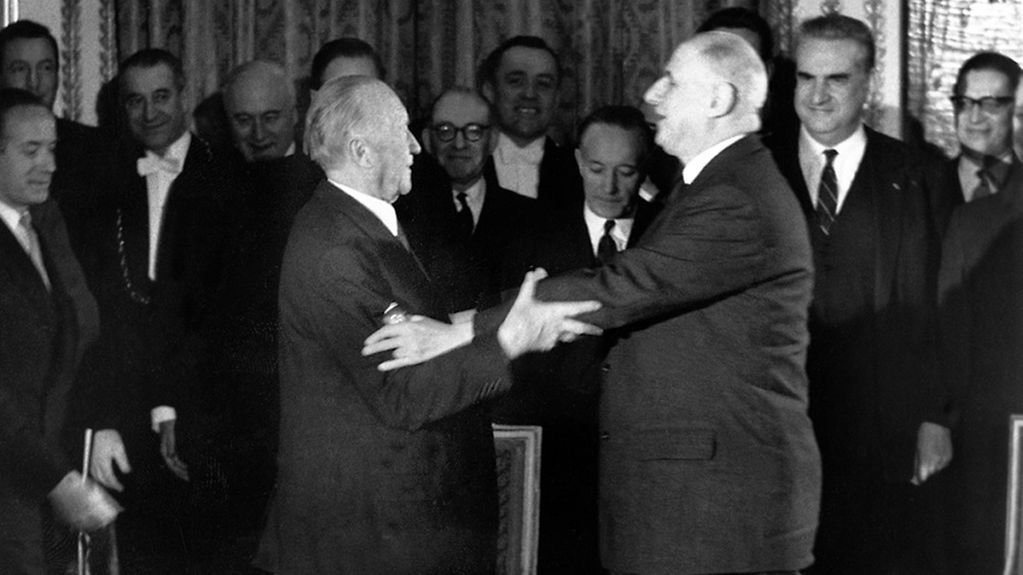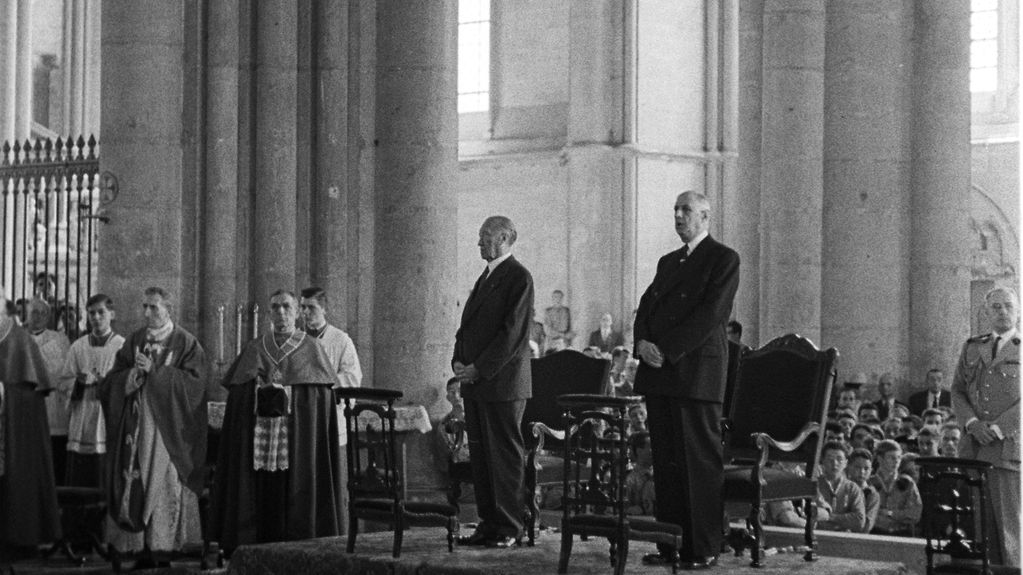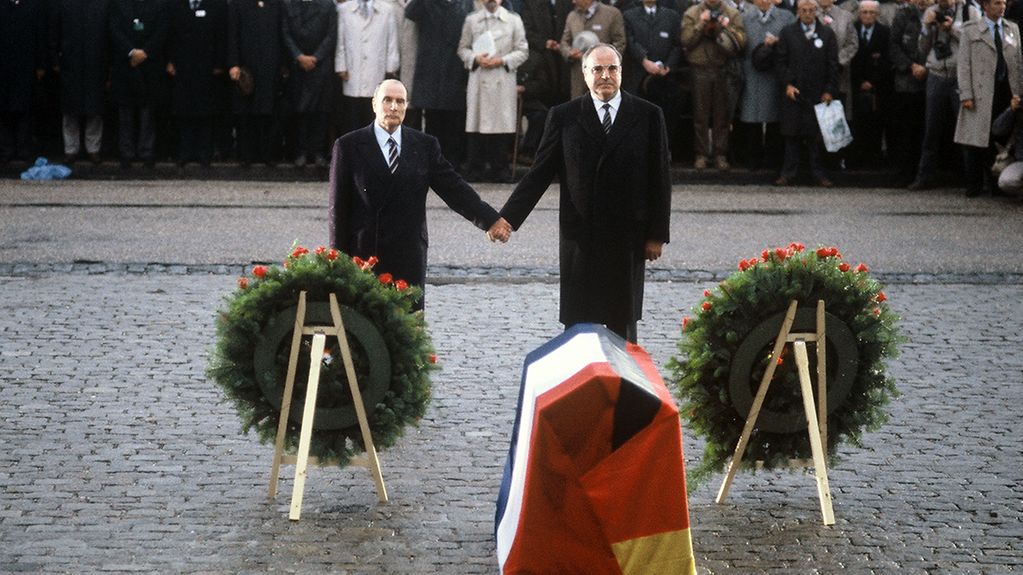Der Link wurde in Ihrer Zwischenablage gespeichert
The Treaty of Aachen, which Chancellor Angela Merkel and French President Emmanuel Macron will be signing today in Aachen, builds on the 1963 Elysée Treaty, which marked the beginning of Franco-German friendship. It was a milestone in the process of European integration. The history of the two neighbours had hitherto been turbulent.
3 Min. Lesedauer

Chancellor Konrad Adenauer and French President Charles de Gaulle signed the Franco-German Elysée Treaty on 22 January 1963
Foto: Bundesregierung/Schwahn
In the 19th and 20th centuries, relations between the neighbouring nations were marked by stark contrasts. Ongoing military and political conflicts engendered a lasting enmity between the two states. Until 1813, Napoleon ruled over German territories. Following France’s defeat in the Franco-Prussian war in 1871, the Prussian King was proclaimed Emperor in Versailles, in a way that was deeply humiliating for France.
The annexation of Alsace and Lorraine was also a humiliation for France and led to anti-German propaganda in France.
The persistent Franco-German antagonism and disastrous miscalculations within the opposing alliance systems led to the First World War, which Germany and its allies lost in 1918.
When Nazi Germany, under Adolf Hitler, invaded Poland 21 years later, the United Kingdom and France declared war in September 1939. German soldiers occupied northern France and Paris, and the Vichy regime under Pétain collaborated with Hitler.
After the Allies liberated France in 1944, Germany finally capitulated in May 1945.
After the end of the war, reconciliation between the two neighbouring nations initially appeared inconceivable. When the French Prime Minister and later President Charles de Gaulle invited the then Chancellor Konrad Adenauer to his private country home in 1958, it was considered a unique historic gesture. The goal was to resume Franco-German relations at cultural, economic and political level.
The bilateral unification process drove the process of European unification and integration, which began with the Treaty of Rome and the founding of the European Economic Community in 1957.

Chancellor Konrad Adenauer (at left) and French President Charles de Gaulle (at right) at the reconciliation mass held in Reims Cathedral on 8 July 1962
Foto: Bundesregierung/Steiner
At a moving reconciliation mass in Reims Cathedral, where the French kings were crowned over a period of many centuries, Konrad Adenauer and Charles de Gaulle made the Franco-German friendship public; from there they went on to sign the Franco-German treaty of friendship at the Elysée Palace on 22 January 1963.
The Elysée Treaty was a milestone in European history. It laid the foundation for further European integration and close bilateral cooperation and assured Adenauer and de Gaulle of their place in history books as the political force behind European reconciliation policy.
The Treaty provided for a consultation mechanism, which stipulated regular meetings at all political levels. The governments undertook to consult more closely on foreign, European and defence policy, but also in the fields of education and youth.
In addition the Franco-German Youth Office was established. It has since enabled millions of children and young people from both countries to take part in over 320,000 exchange programmes.
The Elysée Treaty, which focused on reconciliation and encounter, sealed the Franco-German friendship. In future, both countries and their people were to cooperate in trust. Since then a close and cordial political partnership has emerged, which is still geared to developing the European project.
Back in the 1970s, President Valéry Giscard d’Estaing and Chancellor Helmut Schmidt worked to establish the European Council and a European Monetary System for the European Community. They also launched the annual economic summit (then the G6 summit).

Chancellor Helmut Kohl (at right) and French President François Mitterrand pay tribute to the soldiers of both nations who fell in the two world wars, at the French national cemetery in Douamont.
Foto: Bundesregierung/Schulze-Vorberg
German reunification took place during an era of close cooperation between Chancellor Helmut Kohl and President François Mitterrand.
In future, Germany and France intend to assume shared responsibility and forge ahead with European integration. To this end, President Emmanuel Macron and Chancellor Angela Merkel agreed to draw up a new treaty in January 2018, at the celebrations to mark the 55th anniversary of the signing of the Elysée Treaty.
The Treaty of Aachen, which will be signed today in the Coronation Hall of Aachen’s Town Hall complements the Elysée Treaty.
The Treaty of Aachen is to strengthen cooperation in the field of economic integration and cooperation between the civil societies of the two nations. It also provides for extending cooperation in the realm of foreign, defence, security and development policy. It shifts the focus to the global challenges of the 21st century, the competitiveness of the two countries and crucial issues for the future, including climate change mitigation and adaptation, the environment, health and sustainability.